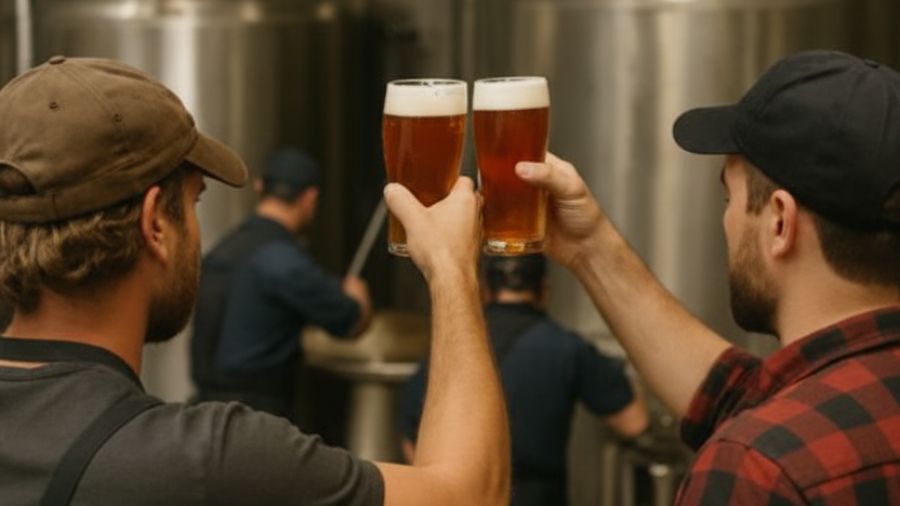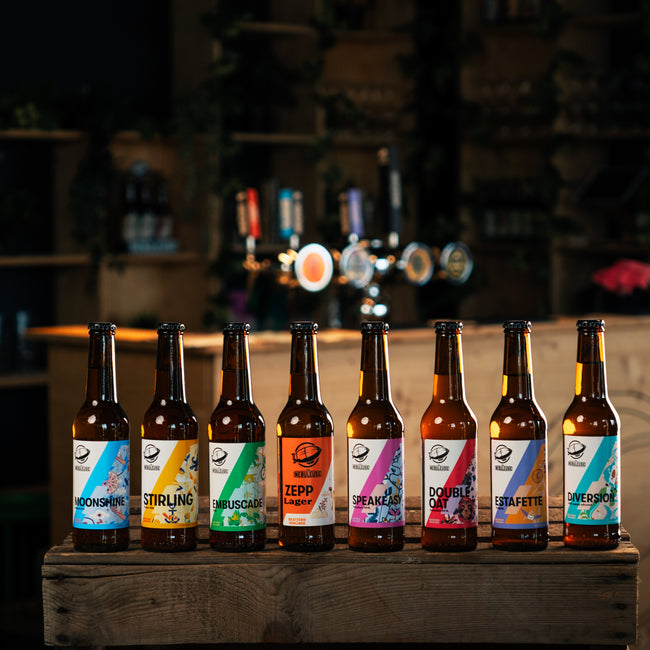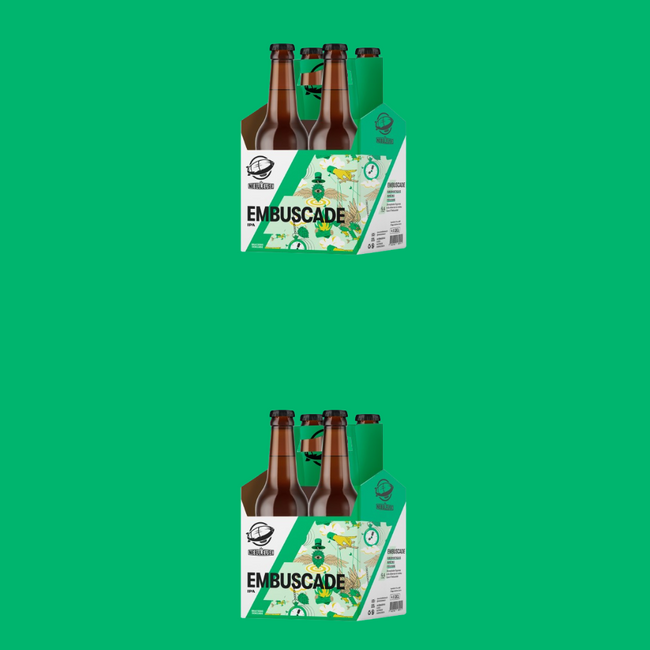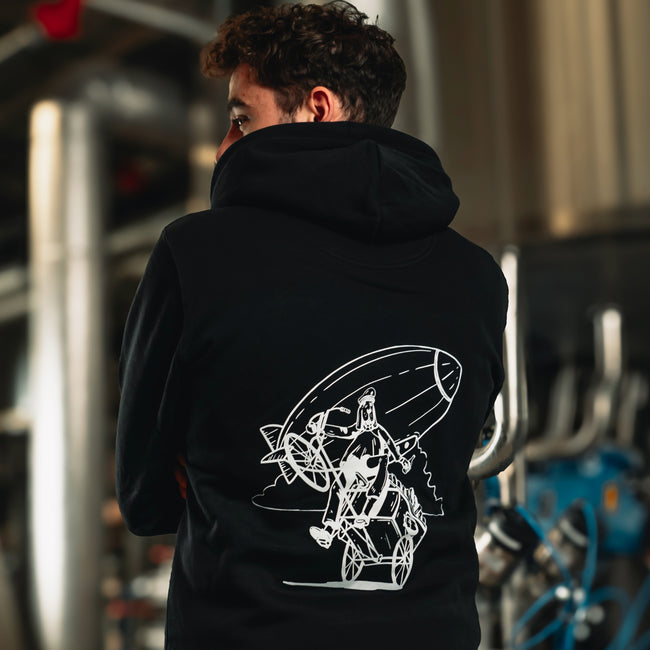Collaborative brewing between craft beer artisans

Imagine two talented brewers, each with their own jealously guarded recipes and secret techniques, suddenly deciding to put their cards on the table, mix their ideas, and create together. A strange concept in a world where competition usually reigns supreme, right? And yet, this is precisely what makes the craft beer world tick: this uncanny ability to say "what if we did this together?" rather than "this is my territory."
Brewing collaboration is like a jam session between virtuoso musicians. We meet, we improvise, we challenge each other, and in the end, we create something that none of the participants could have conceived alone. A symphony of malt and hops that bears the intersecting signatures of different passionate artisans.
When traditional mutual aid transforms into a modern creative movement
Mutual aid among brewers is nothing new. As early as the Middle Ages, brewers exchanged yeast and advice. What's new is how contemporary craft breweries have transformed this historic solidarity into a genuine creative movement.
The first formal collaborations emerged in the 2000s, when a few rebellious American brewers began brewing experimental recipes together. What was then a marginal curiosity has since transformed into a global phenomenon . Today, these "collab brews" represent the very essence of the craft spirit that is transforming the brewing landscape : open, curious and fundamentally opposed to the industrial logic of secrecy and the immutable formula.
The difference is striking. While large brewing groups protect their recipes like state secrets, artisans openly share techniques and ideas. This is a major snub from the small companies in the face of the giants: our strength lies precisely in sharing, not in withdrawing into ourselves.
La Nébuleuse's Tropic Like It's Hot takes the concept even further by creating a 100% collaborative IPA with its community. From the label design to the ingredients, every detail was decided by vote. The result? A tropical explosion dominated by passion fruit that would never have seen the light of day without this collective intelligence. Proof that the best creativity is often that which draws on multiple influences.
Behind the scenes of a collaboration, when ideas meet
Collaborations take infinitely varied forms. Some unite neighboring breweries, others cross oceans to build bridges between brewing traditions. Still others cross boundaries between disciplines: brewers partnering with roasters, distillers, Michelin-starred chefs, or artists.
But how does it work in practice? It usually starts with a meeting, often at a festival or professional event. The idea germinates over a beer (obviously), and then the discussions intensify: what style to brew? What ingredients to use? What techniques to favor? Who will brew? How will it be distributed?
Brewing day is often a joyous creative cacophony where everyone's habits are shaken up. A ballet of expertise that combines technical precision and spontaneity, passionate arguments and bursts of laughter. Egos must be kept in the locker room—a rare quality among creators, let's face it.
Double Trouble perfectly illustrates this collaborative alchemy. This double IPA, originally released in 2016, embodies the creative madness that arises when brewers give each other carte blanche. Imagine the explosion of mango, papaya, and passion fruit, then the final twist: the infusion of Ghost Pepper that sets the taste buds on fire without compromising drinkability. Never before would such a bold idea have emerged from a standardized creative process.
How collaborations are transforming the craft ecosystem
The benefits of collaborations go far beyond mere ephemeral marketing. For the breweries involved, it's primarily an accelerated transfer of know-how. In just a few days, you absorb techniques, approaches, and perspectives that would otherwise take years to discover.
It's also a surprisingly effective way to expand your horizons and market. A small Swiss brewery can suddenly reach fans in Berlin or Barcelona thanks to an international collaboration. These exchanges are often part of a broader approach to sustainability and local economics .
But perhaps it's the consumers who benefit most . Each collaboration is a unique, often ephemeral creation, enriching the beer offering with new and unexpected expressions. It's like having access to a collection of limited singles rather than the formatted hits of commercial radio.
At a deeper level, these collaborative projects reinforce the core values that define the craft spirit: creativity over standardization, community over isolation, innovation over reproduction. A mindset that goes beyond the product to become a true culture, debunking myths about beer and creating almost a philosophy.
The collaborative revolution that sparkles in our glasses
Ultimately, the magic of collaborations lies in their ability to embody the very essence of beer: bringing people together. For millennia, beer has been the beverage that facilitates connection, exchange, and sharing. What could be more natural, then, than its creation itself becoming a collective act?
These collaborative projects remind us of a truth that industrialization had almost made us forget: the best creations often arise from exchange and breaking down barriers. When boundaries blur—between breweries, between countries, between disciplines—innovation accelerates and creativity soars.
So the next time you spot that "collaboration" label, remember that you're holding more than just a beer. It's a small miracle of human alchemy, liquid proof that the union of talents always creates something greater than the sum of its parts.
And that's definitely worth raising our glasses to. Cheers!









